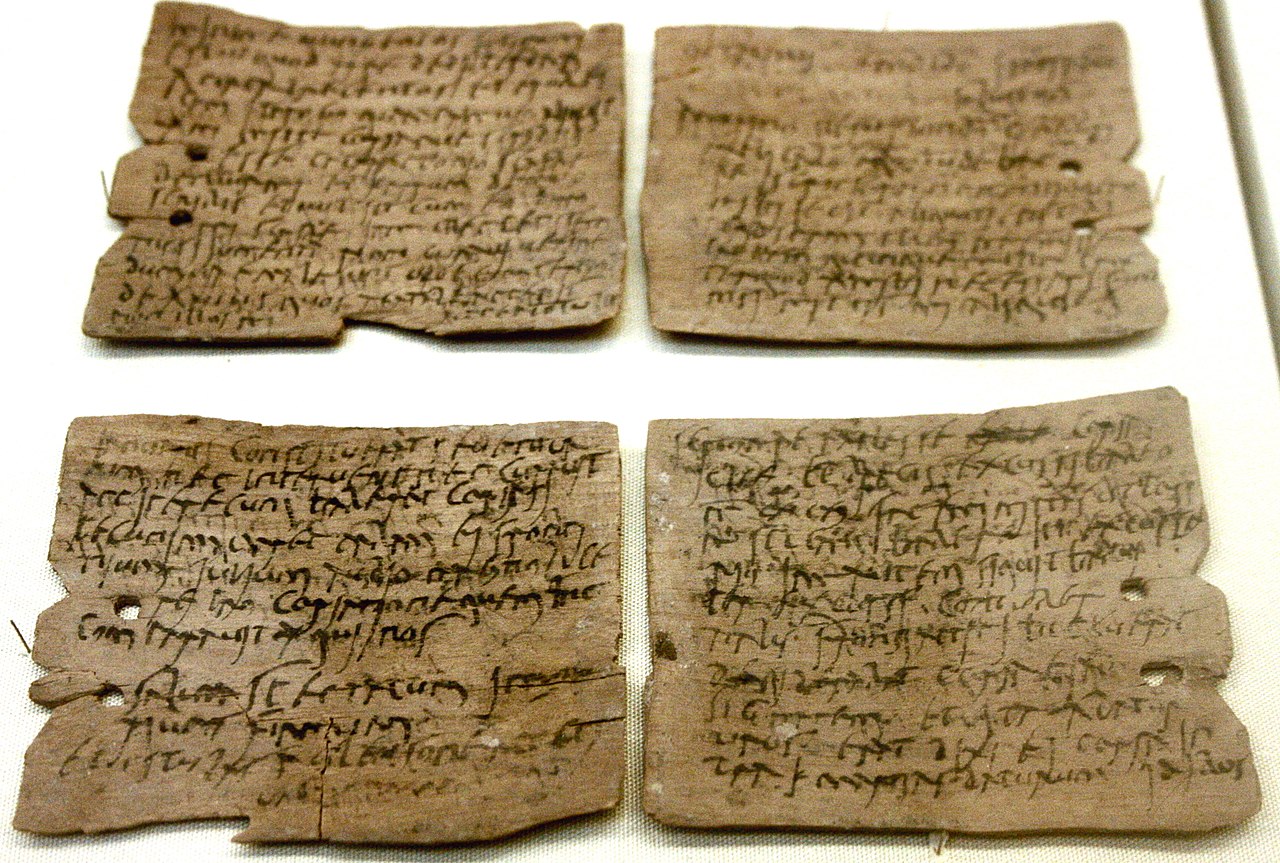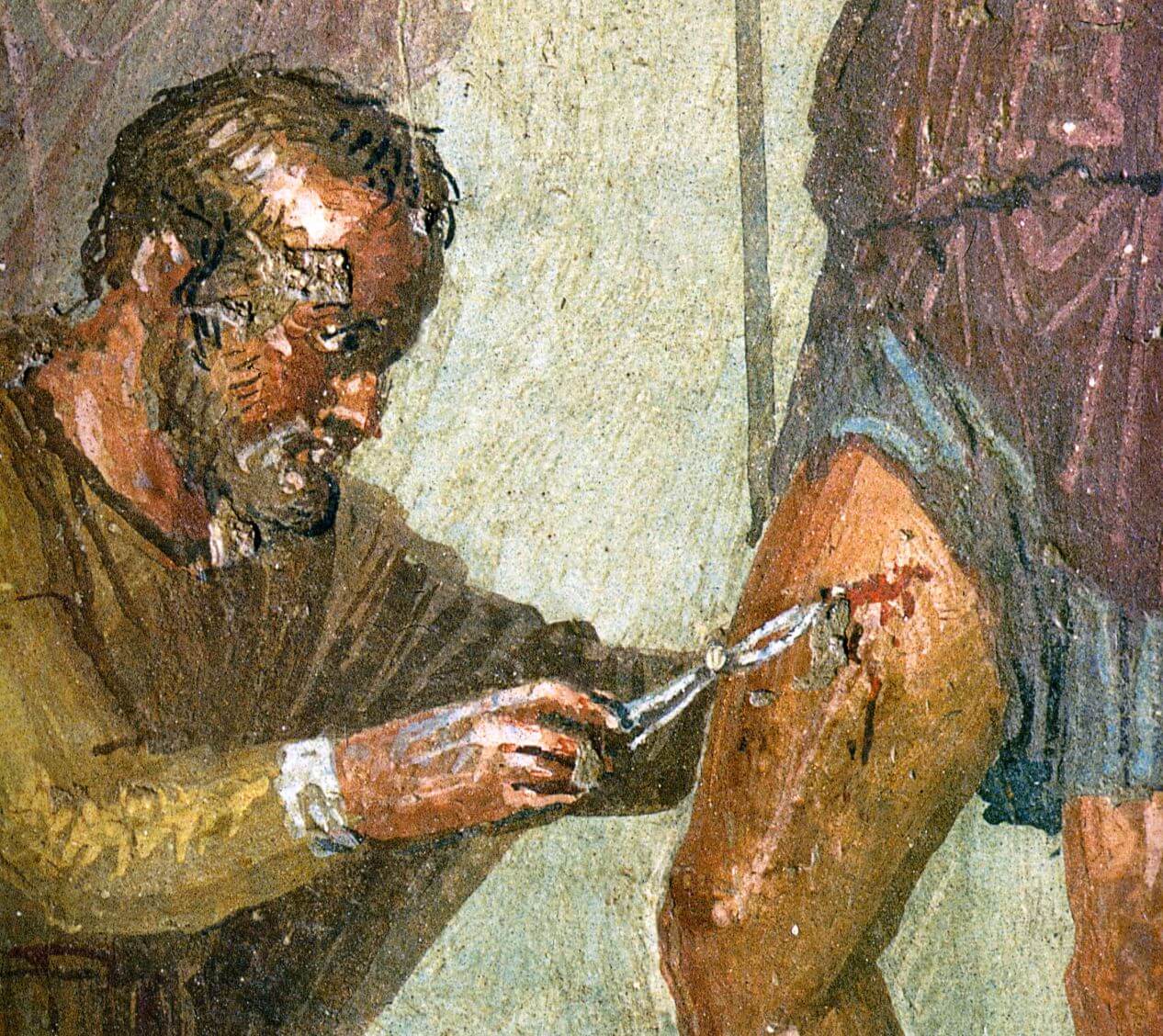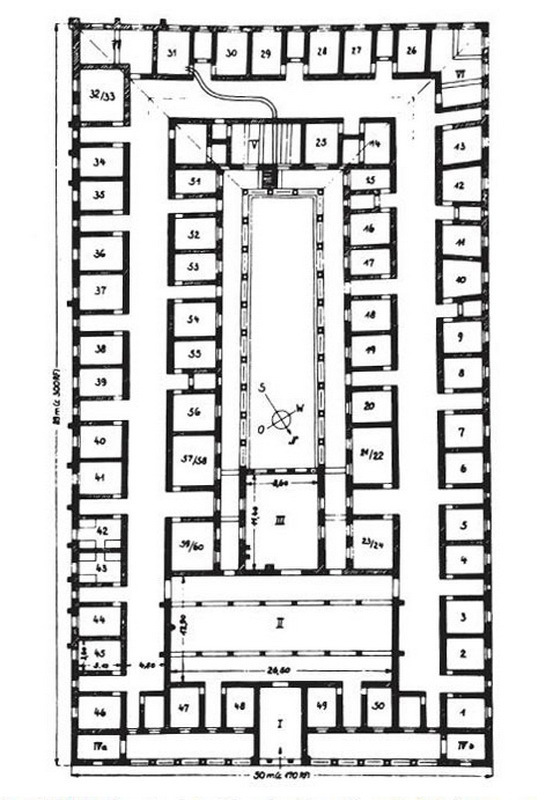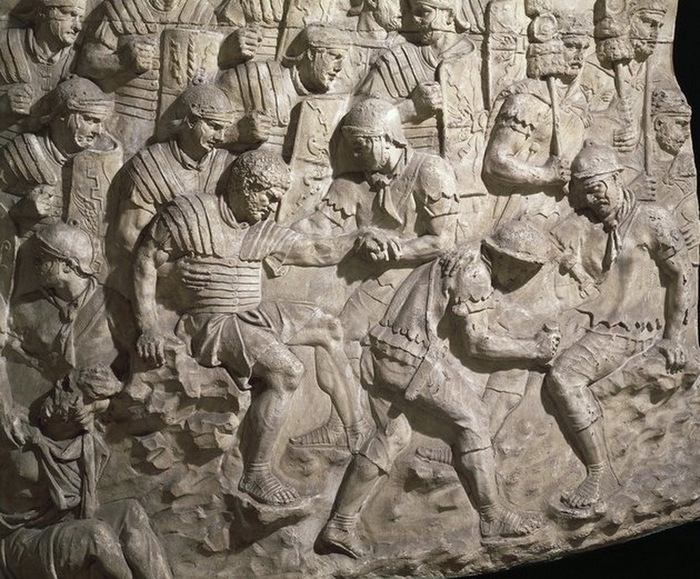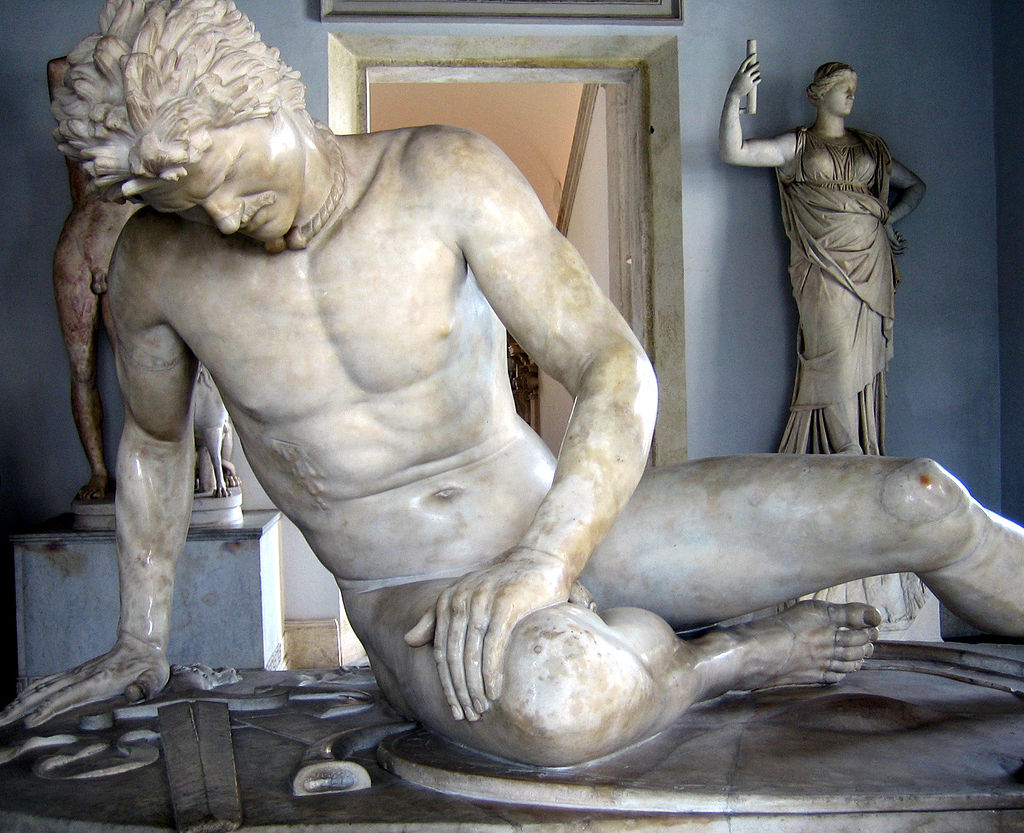To the health of legions
The Roman legions are considered a model of military efficiency. Military medicine was structured, including Greek influences and rituals, to provide care to these exceptional combatants.
Jean-Christophe Piot relates with a certain rigour - and a certain freedom of tone - the most significant pages in the history of medicine.
For a long time, the legions were the most powerful Mediterranean armies in the West, by far. Rightly renowned for their efficiency, the Roman legions conquered in five centuries an Empire stretching from present-day Scotland to Syria and from the Maghreb to the banks of the Rhine, before keeping control of it for another five centuries. All this with a surprisingly small force: 300 to 350,000 men1 to protect a population of 80 million souls at its peak in the second century. Men who had to be fed, transported, trained, commanded - and cared for. A portrait of one of the first military health services in history.
Made in cooperation with our partners from esanum.fr
It was the 18th of May in a year that remains unknown, on the edge of the Empire, a hundred miles - roughly 160 kilometres, therefore - south of present-day Edinburgh. In the shelter of the walls of Vindolanda, one of the main military camps set up in 122 AD along Hadrian's Wall, a soldier of the Cohors Prima Tungrorum, or first Tongan cohort2, set about the tedious task of summarising the state of health of the 296 soldiers in the camp. He did not dwell on the health of the 456 others who had left the camp for patrols or work.
Carefully recorded in black ink on one of the many wooden tablets found on the site, this state of affairs is one of the few "health conditions" that have come down to us. Of these almost 300 auxiliaries, 31 are not fit to serve, 15 are ill (aegri), 10 suffer from eye inflammation (lippientes) and 6 are injured (vulnerati), without it being known how or from what. Although tedious at first sight, this administrative report is valuable for military historians: It shows that a precise count of the sick and wounded was kept.
This was not always the case. The least that can be said is that literary sources are more than discreet about the way in which Rome's soldiers were treated. Latin authors, who are rarely sparing with details when it comes to describing the horrors of battle, are distinguished by their silence when it comes to the care given to wounded or sick soldiers. Julius Caesar himself, though renowned for the attention he paid to his men, never mentions them, contenting himself with drawing up a cold balance sheet of losses in the evening of his battles. The wounded, for their part, are passed over in silence.
The first mention of a military physician in action is to be found in Virgil. In the Aeneid, a long poem that the poet devotes to the story of the founding of Rome by a few surviving Trojans who escaped from their burning city, Virgil tells us that a certain Iapyx, physician to the old king Priam, treats Prince Aeneas himself by removing an arrowhead stuck in his thigh, first by hand and then "with strong pliers". Not without the help of a prestigious carer, Venus herself, who is determined to save her protégé's life discreetly: "The miracle happens, while old Iapyx bathes the wound without suspecting anything. All pain ceases, the blood stops at the bottom of the wound, the arrow comes into the hand and the wounded man recovers his strength."
Some tablets from Vindolanda
System D
The episode is sufficiently familiar that a striking representation of it can be found on the walls of Sirico's house in Pompeii. It also sums up what Roman military medicine - indeed, all medicine - was for a long time: A little technique and a lot of magic and belief.
Although it is more than likely that a form of solidarity between brothers in arms always led able-bodied soldiers to bring their wounded companions back to the rear in the aftermath of a battle, the silence of the Latin authors can no doubt be explained by the fact that the soldiers affected were already navigating in very murky waters, on the borderline between the world of the living and that of the dead. At a time when hygiene rules that seem elementary to us did not exist any more than the notion of sterilisation or disinfection, an open wound had a good chance of sending the patient to Pluto, more or less quickly.
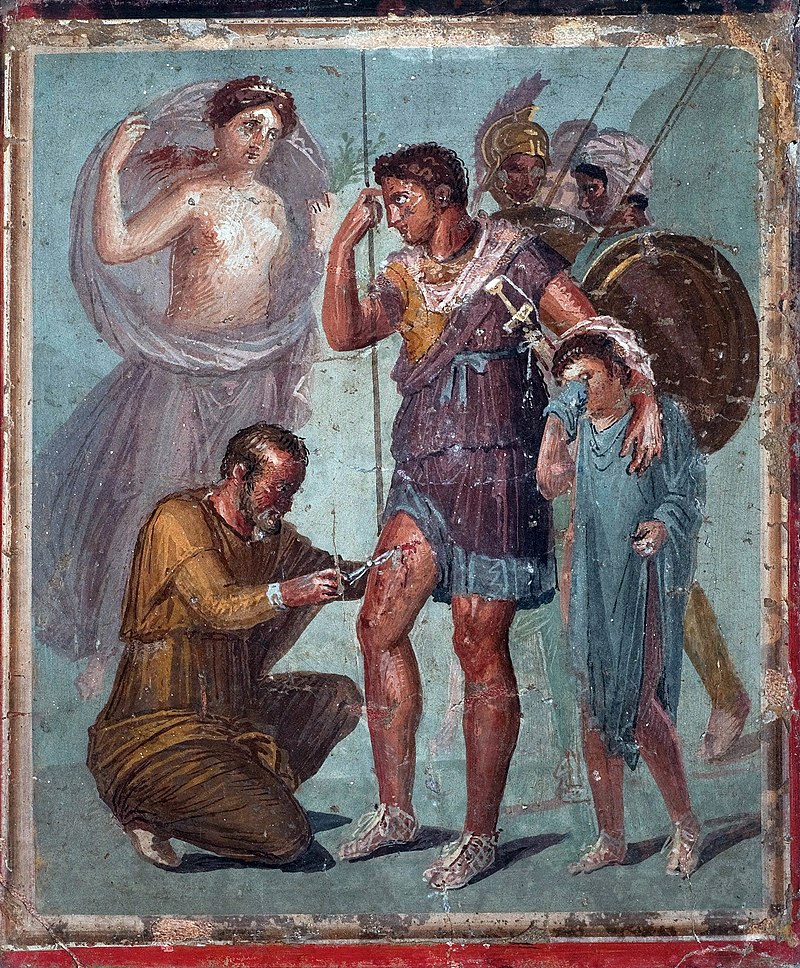
"Not bad at all"
Things changed when Rome turned its attention to Greece, which was finally subjugated in 146 BC. Greek medicine, far more advanced than the still largely empirical Roman practices, gradually changed the daily life of the population in general and the soldiers in particular. With a touch of mistrust - Greek practitioners are sometimes referred to as carnifex (executioners) in the texts.
At the beginning of the empire, when Augustus reorganised the Roman army to make it a corps of war professionals, the idea of preserving the health of combatants and organising the care of the sick and wounded became increasingly important. It became one of the daily duties of the officers, starting with the first of them in one of the famous Roman camps, the praefectus castrorum. Not without reason: Once again, there were not enough legionnaires to afford the luxury of sacrificing those who could be saved.
As proof of this new attention, the presence of the emperor at the bedside of the wounded soldiers became a recurrent motif in literary texts, as the "good" emperor or the good prince had to show his support to his men. Of General Germanicus, Tacitus says: "He helped the wounded from his purse (...) visited them and noted their good deeds. While examining the wounds, he encouraged this one by hope, that one by glory, all by words and care which won their hearts and strengthened them for the hour of combat."
Pliny praises the emperor Trajan for giving "consolation, encouragement and help to the wounded, tired and sick soldiers". This was a public communication operation that also aimed to win the loyalty of the legionnaires in an empire that was largely a military monarchy.
Patients like no other
If Rome never counted on quantity to ensure the pax romana at home - or to launch what we would call today external operations - it compensated by quality. To the extent that the patient base of a Roman physician under the empire presents some particular traits. Firstly, it was exclusively male. Secondly, his patients, generally aged between 18 and 45 years3, were for the most part in good shape - the legionnaire was an athlete.
Handpicked at the time of their recruitment, they were tall for their time (ideally 1.76 metres) and gifted with a physique that was all the more impressive because they literally never stopped training, whether by multiplying the number of manoeuvres and operations in the good season or by practising behind the walls of the castra during the bad season, if necessary under the shelter of vast basilicas, specially equipped training rooms.
The soldiers of Rome had to be able to exert repeated efforts, carry out arduous work, walk up to 40 kilometres a day carrying a 40-kilogram pack, throw a javelin several dozen metres and occasionally thrust a sword through an enemy soldier - all of which, as everyone would agree, was not within the reach of the average person.
Finally, the lifestyle of the legionnaires was relatively exemplary in several respects: No or little alcohol - wine was largely cut off and most men drank a light mixture of vinegar and water with egg yolk, posca - obviously no tobacco or drugs, regular visits to the thermal baths... Only the food was lacking: Essentially based on the consumption of cereals, dried fruit and oil, it was lacking in meat, fresh vegetables, calcium, sugar and protein.
The military hospital
In the absence of really precise literary sources, archaeologists and historians have found the most telling sources in the camps and in the surrounding area to get an idea of what military medicine was like in the legion: It is essentially thanks to these sources that we know the plan and functioning of an essential place in the famous Roman camps: The hospital/infirmary, or valetudinarium, which appeared in the first century, at the end of the reign of Augustus.
Located in the main barracks, therefore essentially on the borders, these hospitals had a more or less identical layout everywhere. Initially made of wood, then progressively rebuilt "in hard" under Claudius and Nero, when the limits of the Empire became somewhat more stable, the typical valetudinarium was a long rectangular building, organised on a single level and generally installed either in the immediate vicinity of the camp, or inside the ramparts themselves, often near the barracks, the baths, the granaries, the workshops or the storehouses.
Layout of a Roman military hospital
Its vast inner courtyard is surrounded by a double row of small rooms, separated by a fairly wide corridor. The dimensions vary, but the average hospital has about sixty rooms of 14 to 18 square metres, capable of accommodating three to four beds - sometimes more. Some rooms had up to five or six patients. Each room was separated from its neighbour by a corridor perpendicular to the central aisle, wide enough to store furniture and equipment: chests, tables, cupboards, crates, amphorae, etc. These spaces could be modified and, in an emergency - the day after a battle, for example - could accommodate new patients.4 Lastly, each hospital had a series of rooms near its entrance, directly reserved for care and operations, which were large and airy, as well as specific kitchens, separate from those of the camp. Latrines and baths completed the ensemble, to ensure basic hygiene.
Physicians, nurses and secretaries
What did the medical staff responsible for receiving the sick and wounded look like? In terms of numbers, historians agree that each army corps had one physician for every 500 men - that is to say, eight to twelve physicians for a camp capable of accommodating a legion, which could number between 4,000 and 6,000 men depending on circumstances and needs.
The texts and funerary inscriptions show that different types of physicians could be distinguished, either by status or by speciality. Some were fully-fledged soldiers (miles medicus) while others, civilians (medicus ordinarius), had a form of fixed-term contract with the army, usually in the context of a specific operation.
The medici castrenses, a kind of chief physician attached to a particular camp, rarely left the barracks, although it is more or less attested that they occasionally treated the population settled in the immediate vicinity of the camps, with the help of their assistants, the optiones valetudinari or capsari.5 Others, regimental physicians, moved with the cohorts and legions as operations required.
All of them had under their command different categories of orderlies, the deputati, soldiers probably trained on the job in the rudiments of war medicine and used to bring the wounded back to the rear or to provide first aid in the field. The physicians, for their part, had received training in one of the empire's major cities that was hardly distinguishable from that of civilian physicians, supplemented by a few specificities relating to the extraction of projectiles and open wounds.
This variety of backgrounds, contracts and training necessarily led to a certain heterogeneity within the medical staff. While some legions and officers probably had the benefit of 'elite' medicine, capable of carrying out precise, complex and sophisticated operations, others were subject to the chance of time and place.
On the Trajan column in Rome, there is a representation of the first aid given to soldiers, probably on the battlefield or in its immediate vicinity.
Bumps, bacteria and beautiful wounds
Contrary to a series of persistent clichés, combat itself played a minimal role in the daily life of the soldier, who spent his time preparing for battles that were certainly intense and eminently risky, but rare - all the more so as battles were fought almost exclusively in the summer months and not during the winter months. The daily life of military physicians therefore probably did not consist of treating war wounds, but rather of managing the infinite number of small pathologies that could affect a group of men constantly occupied with physical tasks: work, building sites, training...
Exaggerating a little, one could say that a medicus had to deal more often with legionnaires who had hammered their thumb in than with stab wounds. Based on literary and epigraphic sources, but also on the study of skeletons found in the tombs of former legionnaires, researchers estimate that the most frequent pathologies were tuberculosis and cataracts. The latter was treated by an operation which consisted of lowering the lens by inserting a long needle into the eyeball, for example a cactus thorn. Yes, it stings. Tuberculosis and cataracts then, and to complete the picture, let us mention silicosis and parasitic diseases. The texts also describe fevers, neuralgia, involuntary poisoning... and scorpion stings.
The rest - and not necessarily the most sustained activity - are injuries received in training, in an accident or of course in battle. In the aftermath of a battle, the dead were buried on the spot (in bello desideratus), in large mass graves dug in haste. The least wounded could return alone; others were carried or supported by comrades transformed for the occasion into stretcher bearers. Finally, the most seriously wounded were transported in "flying ambulances", in other words, wagons that also made it possible to move physicians and their assistants over sometimes vast battlefields.
As for the type of wounds, the inventiveness of the human race when it came to getting into a fight with its fellow man already made it possible to intervene in a variety of situations. Slingshot bullets, arrows and javelin irons for throwing weapons, fractures and open wounds with knives in hand-to-hand combat, burns...
Physicians and surgeons, trained in the extraction of arrows, also performed amputations, useful for reducing the risk of gangrene but carried out in conditions that make one shudder - raw, without the shadow of anything vaguely approaching an anaesthetic substance. For this operation, the manuals recommend that the physician give the patient soothing words, choose a sharp instrument, use four fairly strong comrades to hold the wounded man and... move reasonably fast.
One thinks back to the portrait of the good surgeon by Decius, himself a high-flying practitioner: "He must be young or close to youth. He must have a skilful and firm hand, never trembling, and know how to use the left as easily as the right. His eyesight should be clear and piercing, his heart inaccessible to fear and pity, concerned above all with healing the patient; far from being moved by cries and showing more haste than the case requires or cutting less than is necessary, he will continue his operation as if he did not hear the patient's complaints."
There remains the question of the effectiveness of such care. No matter how skilled the practitioners and surgeons were, the lack of knowledge about what are now basic principles of hygiene must have weighed heavily. Even when washed and regularly sprinkled with fresh water, the wounds were subject to a constant risk of infection, especially as no one washed their hands. Bandages were often soiled with blood or pus, and were sometimes replaced by earth or scary poultices - without going into detail, animal excrement was held in high esteem. Herbalism having its limits, pharmacopoeia was not to be of much help, when it was not dangerous: Applying a cut onion to the lips of a wound does not sound like a highly convincing prospect, nor does the idea of pouring the human blood of a comrade over it.
Magic and rituals
If the legionnaires came to doubt their chances on the earthly plane, they had the option of turning to more heavenly help. As has been said, Roman medicine never strayed far from religious ritual, even after it had integrated the Greek corpus. This is a matter of perspective: For a Roman, the relationship with the gods is based on a contract. If the sacrifice is sufficient, the gods are somehow obliged to do their utmost to pull the patient out of the underworld. For this, there are the official deities: Apollo, father of the physicians, Aesculapius and finally Salus, better known by her Greek name of Hygie, whose emblem - a cup of wine surrounded by a snake - is still used today by pharmacists.
Often associated, this holy trinity of care had its altars and sanctuaries, sometimes important ones: In a temple dedicated to Aesculapius (asklepieion), the legionnaires could access a sort of dormitory room where they went to dream, under the influence of the God. A priest-physician would then interpret them, directing his treatment accordingly, in the hope of obtaining what we would call today a placebo effect.
Finally, there was magic, many details of which will escape us forever, lost because they have rarely been recorded. At most, we know from Sextus Julius Africanus (at times referred to as "Julian the African") that there was a useful formula for tightening wounds caused by iron, but he only mentions the beginning: "tatata". Frustrating, isn't it?
On display in the Capitoline Museum, the statue of the dying Galatian is a good image of the fighter left to his own devices, literally left naked and reduced to tightening the lips of his wound himself.
Notes:
1. By way of comparison, the French army today has 270,000 personnel for a population of 67 million.
2. The Tongans are a people of Belgian Gaul, integrated into the Roman world since the conquests of Caesar.
3. The average age of a legionnaire is 47 years at his death.
4. And the number of casualties could rise quickly, if the number of deaths recorded during certain confrontations is to be believed. At Cannes, Rome lost 45,000 men to the Carthaginians. At Gergovia, Caesar saw up to 700 legionnaires fall per day during the siege.
5. De capsa, the Roman equivalent of a first aid kit: a box in which one carried ointments, some bandages and the most common medical instruments.
